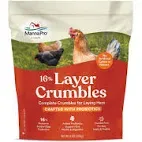
Nov . 27, 2024 08:50 Back to list
Exploring the Benefits and Uses of Custom Ivermectin and Avermectin Formulations
Understanding Custom Ivermectin and Avermectin Applications and Implications
Ivermectin and avermectin are two closely related compounds that have garnered significant attention in the fields of medicine and agriculture. Ivermectin, in particular, has become well-known for its effectiveness in treating various parasitic infections, while avermectin, a closely related substance, is primarily utilized in agricultural settings as an insecticide. This article explores the relationship between these two compounds, their applications, and the implications of using custom formulations of ivermectin and avermectin.
The Origins of Ivermectin and Avermectin
Avermectin was first discovered in the late 1970s from the fermentation products of the microorganism *Streptomyces avermitilis*. Following this discovery, researchers at Merck & Co. went on to develop ivermectin, a semi-synthetic derivative of avermectin. Since then, ivermectin has emerged as a critical tool in combating parasitic diseases in both humans and animals, including river blindness (onchocerciasis), lymphatic filariasis, and various other helminthic infections.
Custom Formulations A Tailored Approach
Custom formulations of ivermectin and avermectin are designed to meet specific needs, enhancing their effectiveness while minimizing potential side effects. In the veterinary field, for example, custom ivermectin formulations can be adjusted according to the species, weight, and health status of the animal being treated. This tailored approach allows veterinarians to optimize dosages and improve treatment outcomes for conditions like heartworm disease in dogs and internal parasitic infections in livestock.
In agricultural settings, custom avormectin formulations can be designed to target specific pests while preserving beneficial insects. This precision is crucial for sustainable farming practices, as it minimizes the ecological impact and maximizes crop yield. By understanding the specific pest population and environmental conditions, farmers can create targeted pest control strategies, reducing the need for broad-spectrum insecticides that can harm non-target species.
The Benefits of Custom Ivermectin and Avermectin
custom ivermectin and avermectin

1. Increased Effectiveness Custom formulations allow for the optimization of drug delivery methods, helping to enhance the bioavailability and efficacy of the active ingredient. This can lead to faster recovery times in animals and more effective pest management strategies in agriculture.
2. Reduced Side Effects Tailoring the formulation can also minimize potential side effects. For instance, in some cases, the use of lower doses or alternative delivery methods can reduce toxicity while still achieving therapeutic outcomes.
3. Environmental Considerations Custom formulations can be designed to reduce environmental impact, especially in agriculture. This means using products that are effective against specific pests without broad-spectrum harm to the ecosystem. More targeted applications can result in better outcomes for biodiversity conservation.
4. Cost-Effectiveness By optimizing dosages and reducing wastage, custom formulations can be more cost-effective. This is particularly important for farmers and veterinarians who need to manage expenses while achieving results.
Challenges and Considerations
While the benefits of custom ivermectin and avermectin formulations are clear, there are also several challenges that need to be addressed. Regulatory hurdles can slow down the development of new formulations and approval processes. Ensuring that these custom products maintain efficacy and safety is crucial, requiring thorough research and trials. Additionally, education for both practitioners and consumers about the appropriate use of these tailored products is vital for maximizing their benefits.
Conclusion
In conclusion, custom formulations of ivermectin and avermectin hold significant promise for improving health outcomes in veterinary medicine and enhancing agricultural productivity. By allowing for targeted treatment approaches, these custom products can lead to more effective control of parasitic infections and pest populations while mitigating environmental impacts. However, navigating the challenges of formulation and regulation remains essential for realizing their full potential. As research continues to evolve in these areas, the future of custom ivermectin and avermectin may very well lead to breakthroughs in how we approach disease control and agricultural sustainability.
-
Premium Young Chicken - Leading Young Chicken Manufacturer & Supplier for Fresh Poultry Needs
NewsJul.08,2025
-
Enterococcus Faecalis Mold Remover – Powerful & Safe Solution from Trusted Manufacturer
NewsJul.08,2025
-
Premium Diarrhea Treatment Solutions Leading Diarrhea Factories & Suppliers
NewsJul.08,2025
-
High-Quality Blisters Manufacturer & Supplier Reliable Blisters Factory
NewsJul.07,2025
-
High-Quality Skeleton Development Services Leading Factory, Manufacturer & Supplier
NewsJul.07,2025
-
High-Quality Cockscomb Turns White Reliable Manufacturer & Supplier Factory
NewsJul.07,2025




